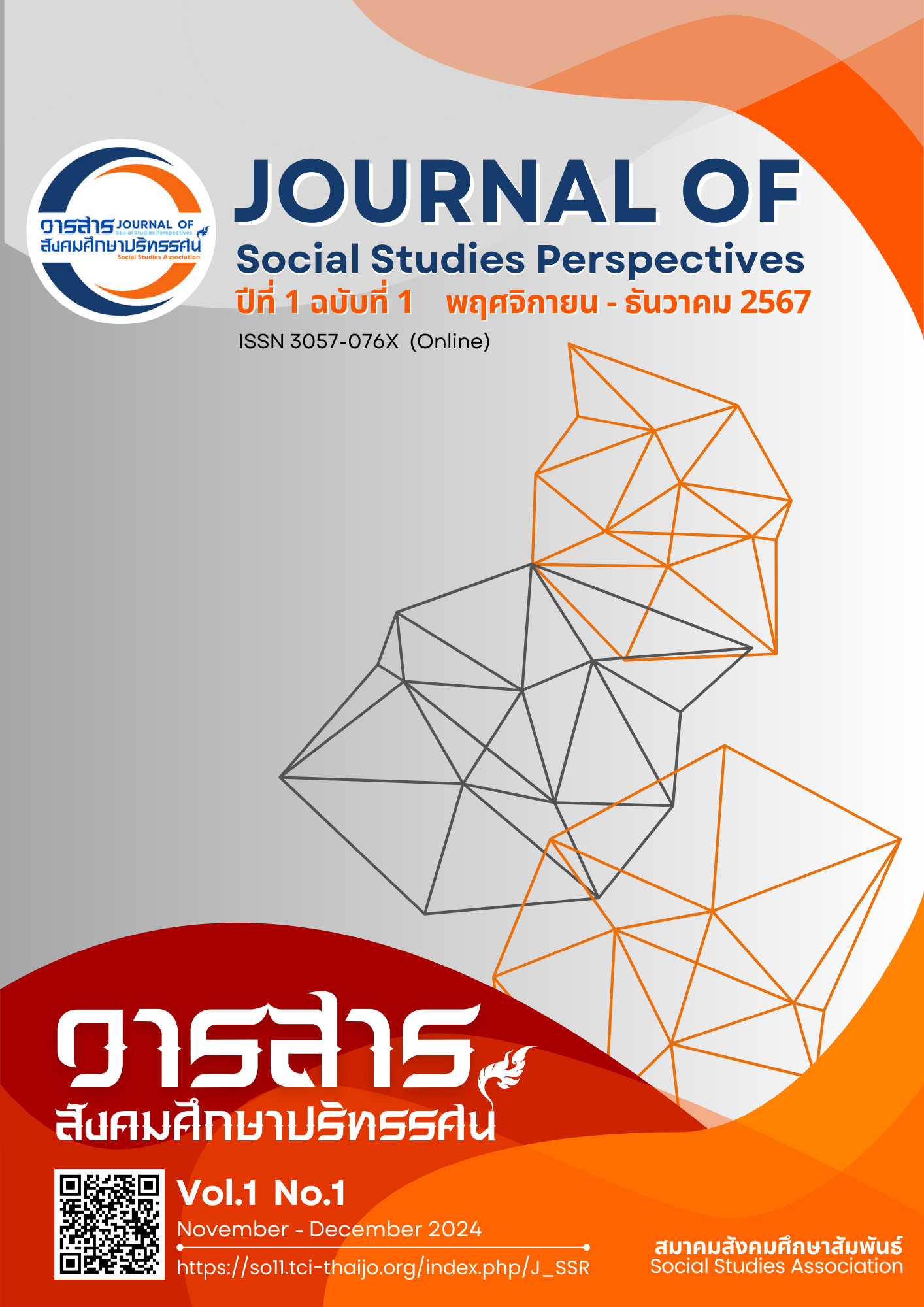THE DEVELOPMENT OF AN INTEGRATED MULTIMEDIA MODEL TO ENCOURAGE CREATIVE PROBLEM-SOLVING IN SOCIAL STUDIES FOR MATTHAYOM 3 STUDENTS
DOI:
https://doi.org/10.64186/jsp1104Keywords:
Creative Integration, Multimedia, Creative Problem Solving, Learning Achievement, SatisfactionAbstract
This research aims to: 1) develop an Integrated Multimedia Model for Matthayom 3 students, 2) Encourage creative problem-solving skills, 3) study students’ learning achievement, and 4) examine students’ satisfaction with the learning model. The study employed a research and development (R&D) methodology. The sample group consisted of 30 Matthayom 3 students selected through purposive sampling. Six instruments were used in the study: a lesson plan on social problems, a classroom observation form for the learning process, pre-and post-tests, a classroom learning evaluation form, a group activity evaluation form for assessing creative problem-solving skills, and a questionnaire on students’ satisfaction with the learning model. Data were analyzed using frequency, percentage, mean, standard deviation, and paired t-tests, and descriptive analysis.
The research results found that: 1) The learning management plan comprised five key components: design principles, objectives, procedures, assessment and evaluation, and learning support factors. 2) 73.33% of students demonstrated improved creative problem-solving skills through group activities, with an average score of 74.81%. 3) Students' academic performance significantly improved post-test compared to pre-test (p < .05). 3) Students expressed the highest level of satisfaction with the learning model, with an average score of 4.62. These results highlight that modern education necessitates integrating digital technology to enable learners to understand diverse contexts, foster creative thinking, and promote in-depth analysis and rational problem-solving. This approach effectively develops essential 21st century skills and connects learning with real-life phenomena.
References
Bebell, D., & O'Dwyer, L. M. (2010). The impact of technology on academic achievement. Educational Policy Analysis Archives, 18(1). https://doi.org/10.14507/epaa.v18n1.2010.
Boonpakdee, K. (2009). Study on Factors Affecting Student Educational Achievement Bachelor of Education, Industrial and Technology, King Mongkut's University of Technology Thonburi. Thesis, Faculty of Industrial Education and Technology, King Mongkut's University of Technology Thonburi.
Chanchokpong, N. (2024). Raising a modern child Understanding Generation Z for better parenting. https://th.theasianparent.com/get-to-know-gen-z.
Chanthong, K. (2017). Teaching of Social Studies in the 21st Century. Academic Services Journal Prince of Songkla University, 28(2), 227-241. Retrieved from https://journal.oas.psu.ac.th/index.php/asj/article/view/1139/1004.
Garrison, K. & Magoon, R. A. (1972). Educational psychology ; an integration of psychology and educational practices. Publisher Columbus.
Khaochaeng, T. (2012). Satisfaction of Grade 6 Students with Buddhist Methods Teaching in the Trisikkha Style in Chanthaburi Kindergarten. Social Sciences for Development, Rumpaiphanee Rajabhat University.
Markham,T. (2011). Project-Based Learning and Its Impact on Students' Motivation and Achievement. International Journal of Project-Based Learning.
Ministry of Education (Thailand). (2008). Basic Education Core Curriculum B.E. 2551 (A.D. 2008). Office of Academic Affairs and Educational Standards.
National Science and Technology Development Agency. (2017). Thai Glossary. NSTDA annals. https://www.nstda.or.th/archives/thaiglossary/.
Osborn, A. F. (1953). Applied imagination: Principles and procedures of creative problem-solving. Charles Scribner's Sons.
Sangthong, A. Niyomsap, N. & Sirithanyarat, C. (2019). Development of problem-solving ability using psychomotor skills learning management with problem solving process and jigsaw technique in culinary arts for eleventh-grade students. Journal for social sciences
research, 10(2), 113-129.
Shelly, W. M. (1975). Responding to social change. dowden Hutchision&Press.
Silver, D. H., & McCormick, L. K. (2012). The impact of creative problem-solving on student achievement and engagement. Journal of Educational Psychology, 104(2), 306–316. https://doi.org/10.1037/a0027600.
Treffinger D., Isaksen S., & Dorval K. (2010). Creative Problem Solving (CPS Version 6.1™) A Contemporary Framework for Managing Change. Center for Creative Learning, Inc. and Creative Problem Solving Group, Inc.
Ubon Ratchathani University. (2021). Meaning of Multimedia. Online Course. https://ismart.ubru.ac.th /lesson/ความหมายของ-multimedia.
Vongtathum, P. (2015). Creative Problem Solving Thinking skills for 21st Century of Learning. Journal of Education Khon kaen university, 38(2), 111-121.
Wongyai, W. & Patphol, M. (2019). Creative Integration. Innovative Leaders Center of Curriculum and Learning.
Downloads
Published
How to Cite
Issue
Section
Categories
License
Copyright (c) 2024 The Social Studies Review Journal

This work is licensed under a Creative Commons Attribution-NonCommercial-NoDerivatives 4.0 International License.
The article is published under the Creative Commons Attribution-NonCommercial-NoDerivatives 4.0 International (CC BY-NC-ND 4.0) license, which allows others to share the article while giving appropriate credit to the author. It prohibits the use of the article for commercial purposes or the creation of derivative works. Any other reuse or reproduction requires permission from the journal.










